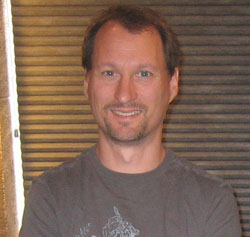
But somewhere along the way we forgot to listen to what was happening to the music. Every engineer I talk to says they hate the volume war, yet most of them participate in it. It’s even starting to affect genres like folk and jazz. It just makes no sense.
OK, that’s the rant. To answer your question, mastering engineers try to facilitate the artistic vision of their clients. While we are often asked to master extremely loud CDs, most of us will tell you that we don’t like it.
There is just no musical reason to throw away so much of the sound so the listener can keep her volume knob at 3 instead of 5. I do think we will look back at this loud era as an experiment gone bad.
Luckily there are signs of sanity with some groups releasing lower volume CDs and organizations such as http://www.turnmeup.org trying to talk some sense into the industry.
To answer the second part of your question, yes, there are some interesting trends that have influenced mastering over the years. Before 1970, when independent mastering was in its infancy, most processing was tube based.
Starting in the 70s and into the 80s, solid state equipment became common. Digital processing was also making an entrance and by the mid 80s, many of the top mastering facilities used digital based mastering consoles and work stations.
The push back to analog and tubes and transformers in mastering coincides somewhat with the explosion of digital recording. Some argue that digitally recorded music lacks a certain quality that only analog processing can provide.
Sales of analog EQs and compressors and vinyl records certainly support that theory. Ironically, even plug-in programmers are trying to sell ‘analog’ sound. Now that’s funny!
For me, whatever tool does the best job is the one I chose. I moved right along with everyone else from analog to digital and back to analog. I’ll even to go tape if it adds the right sound to a project.
Aside from the loudness trend, which we all have to deal with, whatever best serves the music is the trend I like to follow.
There’s a lot of misinformation available about down sampling and dithering, particularly on the internet. Can you talk, briefly, about your ideas on dithering—does it vary by genre? Do you prefer one type of dithering over another?
Down sampling and dithering are important things to do correctly but play a minor role in the grand scheme of things. The most important pieces of the puzzle are the performer, the performance, the instrument, the recording chain, the mixing, and then the mastering – in that order!
Things like what wire you should use or what dither is best are really way down the ladder of importance. Yes, use dither. Just don’t get too hung up on that stuff until everything else is as good as it can be.
Properly done, dithering from a 24-bit word to a 16-bit word will retain most of the sound which would otherwise be lost with simple truncation. It also reduces the quantization error inherent in the process.
I use flat dither 90 percent of the time. It just works without introducing other problems. Some of the fancy flavored dithers interact with high frequency content in an unexpected way.
OTOH, some times I find some of the more exotic dithers a bit more transparent for delicate acoustic things. I especially like POW-r dither (http://en.wikipedia.org/wiki/POW-R) as it’s implemented in my z-Systems z-Q2 equalizer.
Unless you need to convert sample rates to a common rate for mixing inside a DAW, SRC should really be left to the mastering stage. And then, it should be done just before the final dither.
If you must convert sample rates, use one of the modern options like the Voxengo R8brain or iZotope SRC. They do a great job and are very inexpensive.
